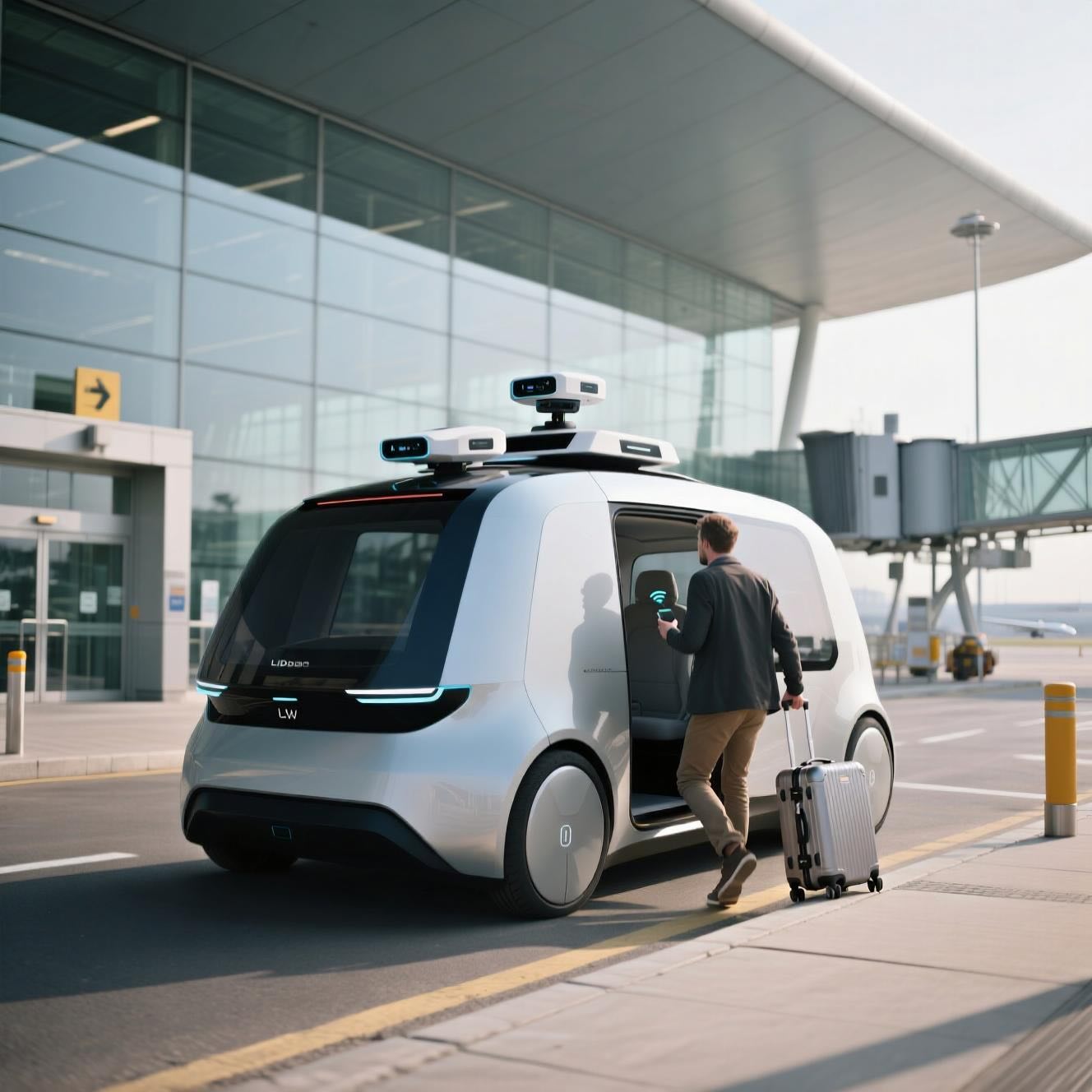
A recent study shows that introducing autonomous vehicles at airport curbsides boosts traffic flow speed, cuts delays, and uses parking spaces more efficiently, paving the way for smarter, less congested terminals.
If you’ve ever circled a busy downtown for ages just to find a spot, you know parking is one of the biggest headaches of modern cities 😫. Believe it or not, in many urban areas, up to 30% of traffic comes from drivers hunting for a place to park! That means more congestion, wasted fuel, and unnecessary emissions 🌍.
But what if autonomous vehicles (AVs) could change that story? Recent research explored the impact of Connected and Autonomous Vehicles (CAVs) on parking, space use, and traffic efficiency. The findings? Game-changing 🌟.
Before diving in, let’s clarify.
Together, CAVs can optimize driving decisions, reduce collisions, and manage parking more efficiently. Think of them as cars that don’t just move you, but also “think” about where they’re going and how to share space with others 🚘💡.
One of the biggest takeaways from the research is how CAVs could dramatically reduce parking demand. Here’s how:
📉 The study found that with higher CAV adoption, the need for on-street parking decreases sharply. This opens up prime urban land for bike lanes 🚴, green spaces 🌳, or wider sidewalks 🚶.
Parking isn’t the only winner. The researchers simulated what happens to traffic flow as CAV penetration increases.
In essence, the more CAVs we have, the better the overall road experience 🚗➡️🚗➡️🚗. And with fewer cars circling for parking, traffic jams shrink even further!
Let’s summarize the big takeaways in bite-sized points:
Imagine if 30% of your city’s parking vanished because it was no longer needed. What could we do with that space?
The study emphasizes that this shift could mark one of the biggest changes in urban design since the invention of the car itself.
The research doesn’t just stop at simulations—it highlights future directions for making CAVs a reality:
For engineers, this isn’t just about cool cars—it’s about systems thinking:
The move toward autonomous vehicles will require interdisciplinary collaboration like never before 🤝.
This research paints an exciting picture: autonomous vehicles won’t just change how we drive—they’ll reshape our cities. By reducing parking demand, smoothing traffic flow, and reclaiming urban space, CAVs could help build cleaner, greener, and more livable communities 🌆🌿.
The road ahead is full of technical, social, and regulatory challenges, but the direction is clear. As adoption grows, we may finally see a world where circling for parking is a story we tell our grandkids—like dial-up internet or VHS tapes 📼.
🚗 Autonomous Vehicle (AV) - A car that can drive itself without human input by using sensors, cameras, and AI to “see” the road and make driving decisions. - More about this concept in the article "NavigScene 🚗 Giving Autonomous Cars a Human Touch with Navigation Smarts!".
📡 Connected Vehicle (CV) - A car that can talk to other cars and road infrastructure (like traffic lights) to share information and improve safety.
🤖 Connected and Autonomous Vehicle (CAV) - The best of both worlds: a self-driving car that also communicates with its surroundings for smoother, safer traffic. - More about this concept in the article "Turbocharging Autonomous Vehicles: Smarter Scheduling with AI 🚗💡".
👨✈️ Human-Driven Vehicle (HDV) - The traditional car most of us drive—fully controlled by humans, with no automated driving assistance.
🚦 Adaptive Cruise Control (ACC) - A smart cruise control system that automatically adjusts your car’s speed to keep a safe distance from the car in front.
🔗 Cooperative Adaptive Cruise Control (CACC) - An advanced version of ACC where cars talk to each other to maintain smoother, coordinated speeds in traffic.
📏 Car-Following Model - A mathematical way to simulate how one car follows another—useful for studying traffic flow and predicting congestion.
🅿️ Parking Space Utilization - How efficiently parking spots are used. High utilization = most spaces are filled; low utilization = many spots stay empty.
⏱️ Vehicle Delay Time - The extra time drivers spend in traffic compared to a smooth, no-delay journey. Basically, the “wasted” time caused by congestion.
🚏 Curbside (at Airports) - The roadway right in front of an airport terminal where vehicles stop briefly to drop off or pick up passengers.
Source: Chang, X.; Yang, W.; Tang, Y.; Liu, Z.; Liu, Z. Analysis on Characteristics of Mixed Traffic Flow with Intelligent Connected Vehicles at Airport Two-Lane Curbside Based on Traffic Characteristics. Aerospace 2025, 12, 738. https://doi.org/10.3390/aerospace12080738
From: Civil Aviation University of China; Transport Planning and Research Institute, Ministry of Transport, Beijing.